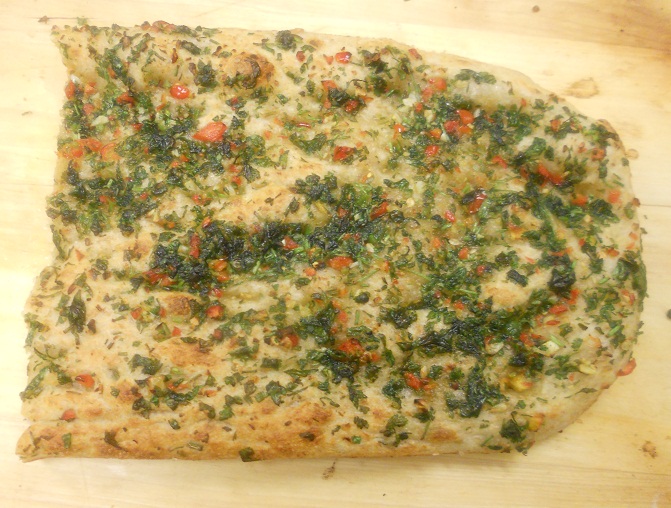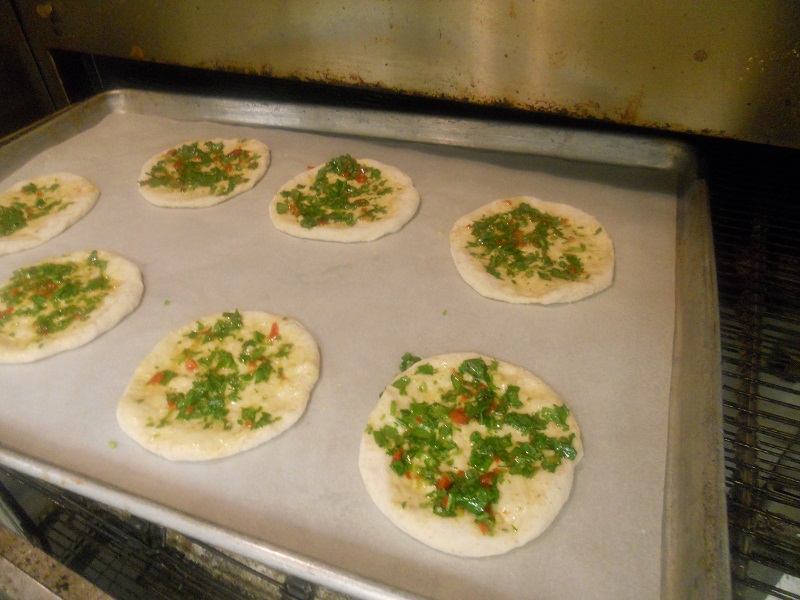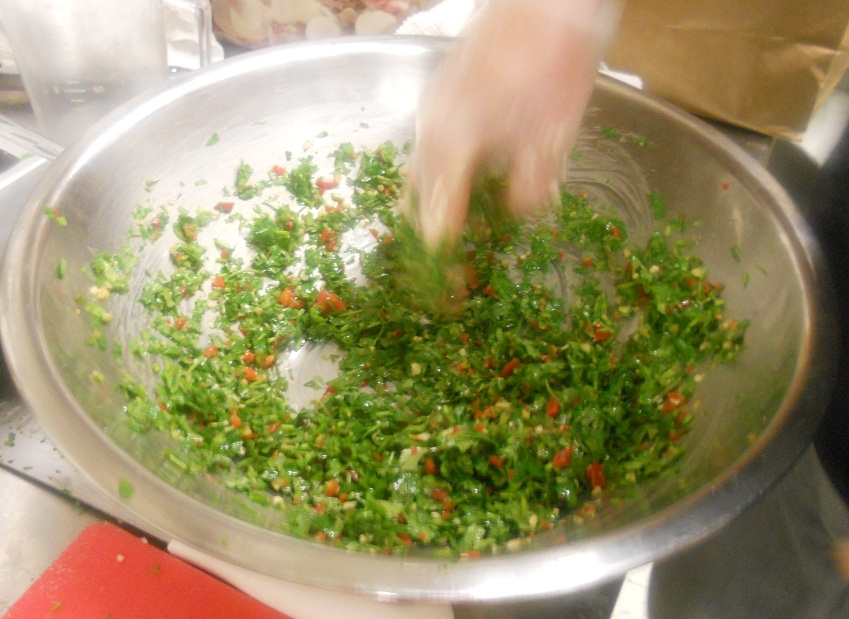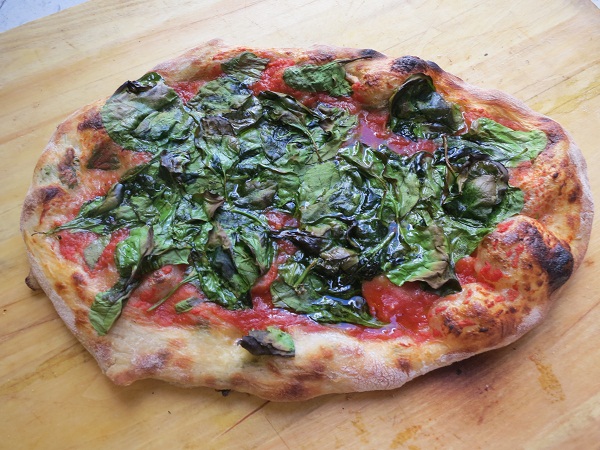
Last week I made a batch of bread and filled the dough with King Family Farms Bacon, Patterson ancho chili’s, fresh cilantro and some gnarly Jeruselem artichokes, (sunchokes,) that one of my favorite organic farmers, Ed Perkins dug up for me. I was proud to create a bread like this with such stellar local ingredients grown by great people.
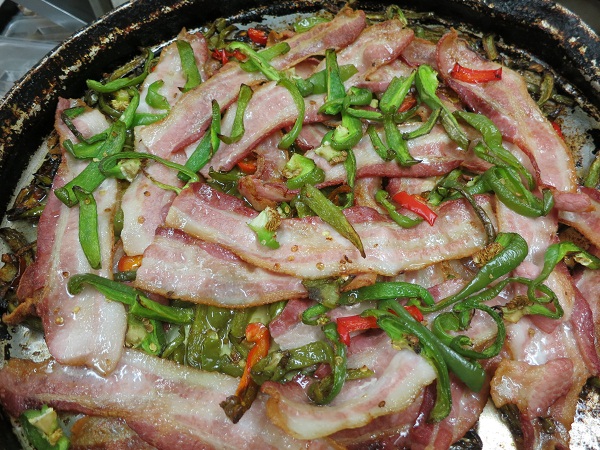
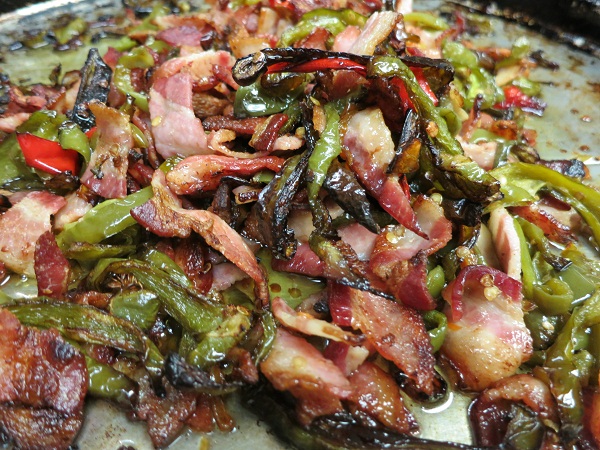
I cut the ancho peppers and added them to a pan with whole strips of bacon and passed them through my 475 degree pizza oven for nine minutes, then I added the sunchokes for another nine minutes after cutting them in large chunks and holding them in lemon water so they wouldn’t turn brown. I had to be careful to not cook the chokes too much or they would turn to mush.

The fougasse I made after letting this dough mature for 26 hours. I then egg washed the dough, cut and formed the dough and let it proof for another hour before firing it up in my conveyor pizza ovens while smiling my fleshy, old man smile as these beauties came out, (above.)
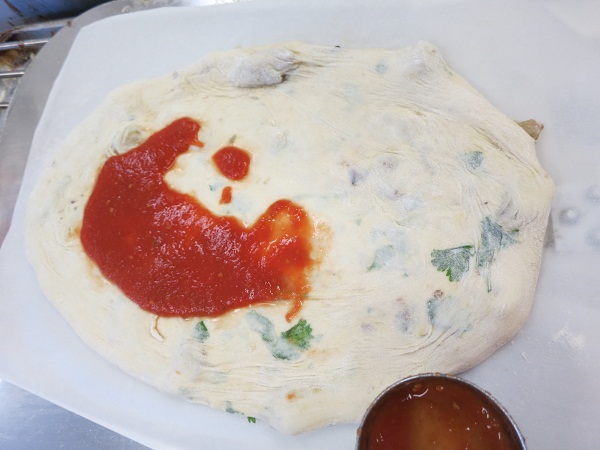
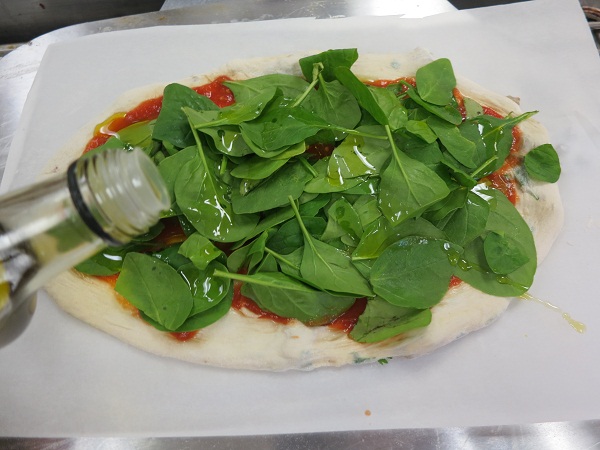
For my pizza lunch, I cut a nine-ounce piece of the dough right after mixing and let it proof in a ball for two hours, (really not enough time for a great dough, but I had mixed 30 pecent flour with a 70 percent pre-ferment so it was maturing fast.) I pressed the dough out gently into a a football shaped schiacciata, (literally means, “flattened” in Italian) then topped it with a light coating of San Marzano tomato sauce, baby spinach and extra virgin olive oil. I baked it in a 475 degree oven for 12 minutes and…
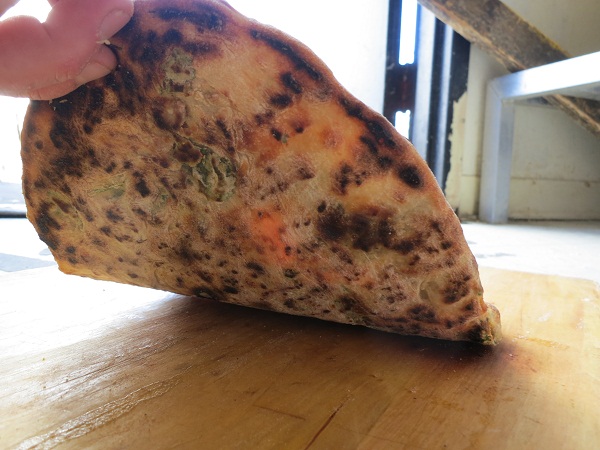
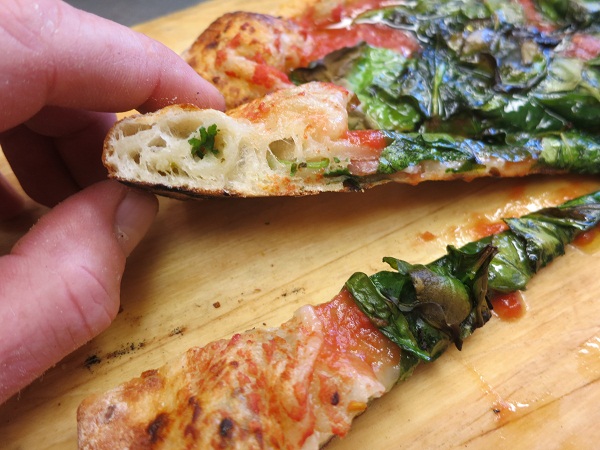
This is what the leapording looked like on the bottom. The cell structure in the dough is small but irregular and because it is so young, the gluten has yet to wrap around the incorporated ingredients.
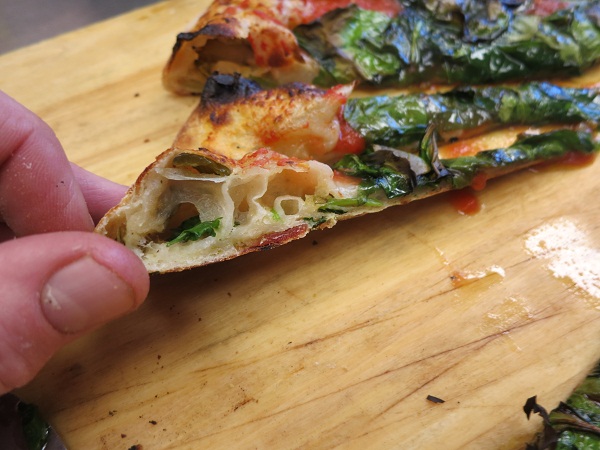
The oil from the bacon and chilies takes more than twenty four hours to get integrated into the dough, otherwise it looks like this, (above.) Although it wasn’t an “Epic Fail,” it could have been a much more mature integrated pizza dough.
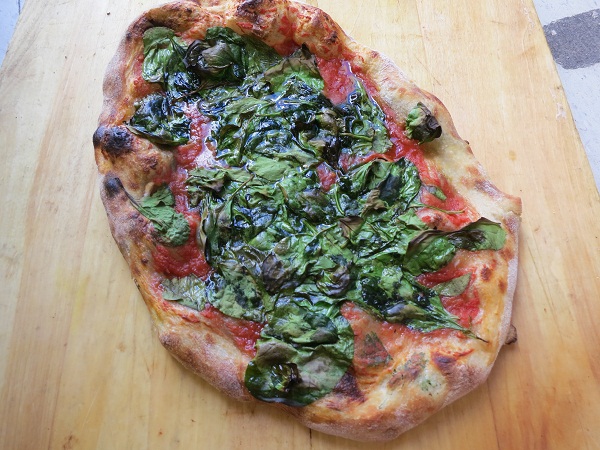
I gobbled it up with glee nonetheless. The feeling of expectation when I bite into a pizza crust that is filled with chilies, sunchokes, cilantro and bacon is enough to make me happy for at least a few hours until the next small business crisis occurs.

